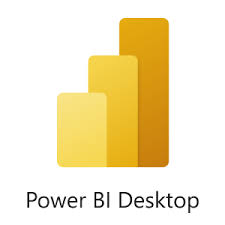How to Install Power BI
Step-by-Step Guide to Installing and Setting Up Power BI Desktop
Introduction
Power BI Desktop is the cornerstone of creating stunning visual reports and dashboards. Before you can dive into the world of data visualization, you need to get Power BI Desktop up and running on your machine. This blog post will walk you through the entire process, from downloading the software to setting it up for your first project. Whether you're a beginner or need a refresher, this guide will help you get started with Power BI Desktop effortlessly.
Why Power BI Desktop
Before we dive into the installation steps, it's essential to understand why Power BI Desktop is the go-to tool for data analysts and business intelligence professionals:
- Free and Powerful: Power BI Desktop is free to download and provides robust features for data modeling, report creation, and data visualization.
- User-Friendly Interface: Its intuitive design makes it easy for users of all levels to create reports without needing extensive technical skills.
- Seamless Integration: Power BI Desktop integrates smoothly with a wide range of data sources, including Excel, SQL Server, and Azure.
How to Download Power BI Desktop
Visit the Official Microsoft Power BI Website
To download Power BI Desktop, head over to the official Microsoft Power BI website. Here, you'll find the download link for Power BI Desktop.Choose Your Version
Power BI Desktop is available in 32-bit and 64-bit versions. It’s recommended to choose the version that matches your system’s architecture. Most modern systems will require the 64-bit version.Download the Installer
Click the "Download" button, and the installer file will start downloading to your system. Depending on your internet speed, this should take only a few minutes.
Installing Power BI Desktop
Once you’ve downloaded the installer, follow these steps:
Run the Installer
Locate the installer file (usually in your Downloads folder) and double-click to run it.Accept the License Agreement
Read through the license agreement, and if you agree, click on the checkbox to accept the terms, then click "Next."Choose the Installation Folder
You can either go with the default installation folder or select a different location on your system. Click "Next" to proceed.Install
Click "Install" to begin the installation process. This will take a few minutes. Once the installation is complete, you can choose to launch Power BI Desktop immediately by selecting the "Launch Power BI Desktop" option and clicking "Finish."
Initial Setup of Power BI Desktop
Launching Power BI Desktop
If you didn’t launch Power BI Desktop right after the installation, you could find it in your Start menu. Click on the Power BI Desktop icon to open the application.Welcome Screen
The first time you launch Power BI Desktop, you’ll be greeted by a welcome screen. Here, you can either sign in with your Microsoft account or skip the sign-in process to explore the tool. Signing in allows you to access additional features like publishing reports to Power BI Service.Explore the Interface
Take some time to familiarize yourself with the Power BI Desktop interface. The main areas include the ribbon (similar to other Microsoft Office products), the report view, the data view, the model view, and the fields pane.
Connecting to Your First Data Source
Now that Power BI Desktop is installed and set up, you're ready to connect to your first data source:
Click on 'Get Data'
On the Home tab, click on "Get Data." Power BI Desktop supports a wide range of data sources, including Excel, SQL Server, and online services like Azure.Choose Your Data Source
Select your desired data source from the list. For this guide, let’s use an Excel file as an example. Click on "Excel" and navigate to the file you want to import.Load Your Data
After selecting the file, Power BI Desktop will display the data available for import. You can choose specific tables or sheets from the file. Once selected, click "Load" to bring the data into Power BI Desktop.
Conclusion
Congratulations! You’ve successfully installed and set up Power BI Desktop on your machine. This foundational step opens up a world of possibilities for data analysis and visualization. In our next blog, we’ll explore how to transform and clean your data using Power Query Editor, a powerful feature within Power BI Desktop.
Call to Action
If you found this introduction helpful, be sure to subscribe to ANMOLPOWERBICORNER for more in-depth tutorials and tips on Power BI.
If you want to know any other detail related to the Power BI, then feel free to reach out to me on Anmol Malviya LinkedIn.
You can also connect with me on Instagram.
Don't forget to share this post with your network and leave a comment below if you have any questions or topics you'd like us to cover!


Comments
Post a Comment